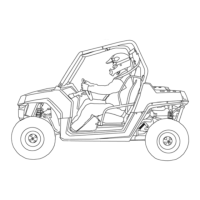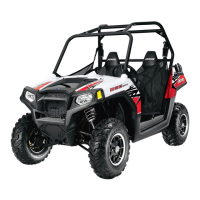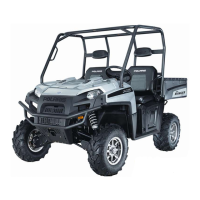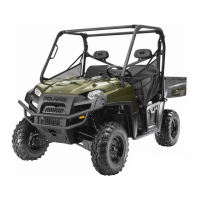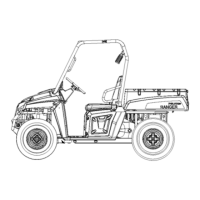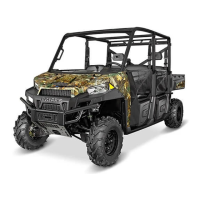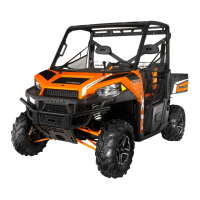2.30
MAINTENANCE
Steering Inspection / Tie Rod Ends and Hubs
• To check for play in the tie rod end, grasp the steering
tie rod and pull in all directions feeling for movement.
• Elevate front end of machine so front wheels are off the
ground. Check for any looseness in front hub and wheel
assembly by grasping the tire firmly at top and bottom
first, and then at front and rear. Try to move the wheel
and hub by pushing inward and pulling outward.
• If abnormal movement is detected, inspect the hub and
wheel assembly to determine the cause (possible loose
wheel nuts or loose front hub components).
• Refer to Chapter 7 “Final Drive” for front hub service
procedures.
Toe Alignment Inspection
1. Place machine on a smooth level surface.
2. Set steering wheel in a straight ahead position and secure
the steering wheel in this position.
3. Place a chalk mark on the center line of the front tires
approximately 10” (25.4 cm) from the floor or as close to
the hub/axle center line as possible.
NOTE: It is important that the height of both marks
be equally positioned in order to get an accurate
measurement.
4. Measure the distance between the marks and record the
measurement. Call this measurement “A”.
5. Rotate the tires 180
° by moving vehicle forward or
backward. Position chalk marks facing rearward, even with
the hub/axle center line.
6. Again measure the distance between the marks and record.
Call this measurement “B”. Subtract measurement “B”
from measurement “A”. The difference between
measurements “A” and “B” is the vehicle toe alignment.
The recommended vehicle toe tolerance is 1/8” to 1/4”
(.3 to .6 cm) toe out. This means the measurement at the
front of the tire (A) is 1/8” to 1/4” (.3 to .6 cm) wider than
the measurement at the rear (B).
Check for Loose Wheel or Hub
= In. / mm.
Wheel Toe-Out:
(A) - (B) = 1/8 - 1/4" (.3 to .6 cm)
Measurement “B”
Chalk Mark
Measurement “A”
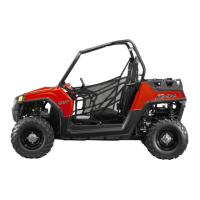
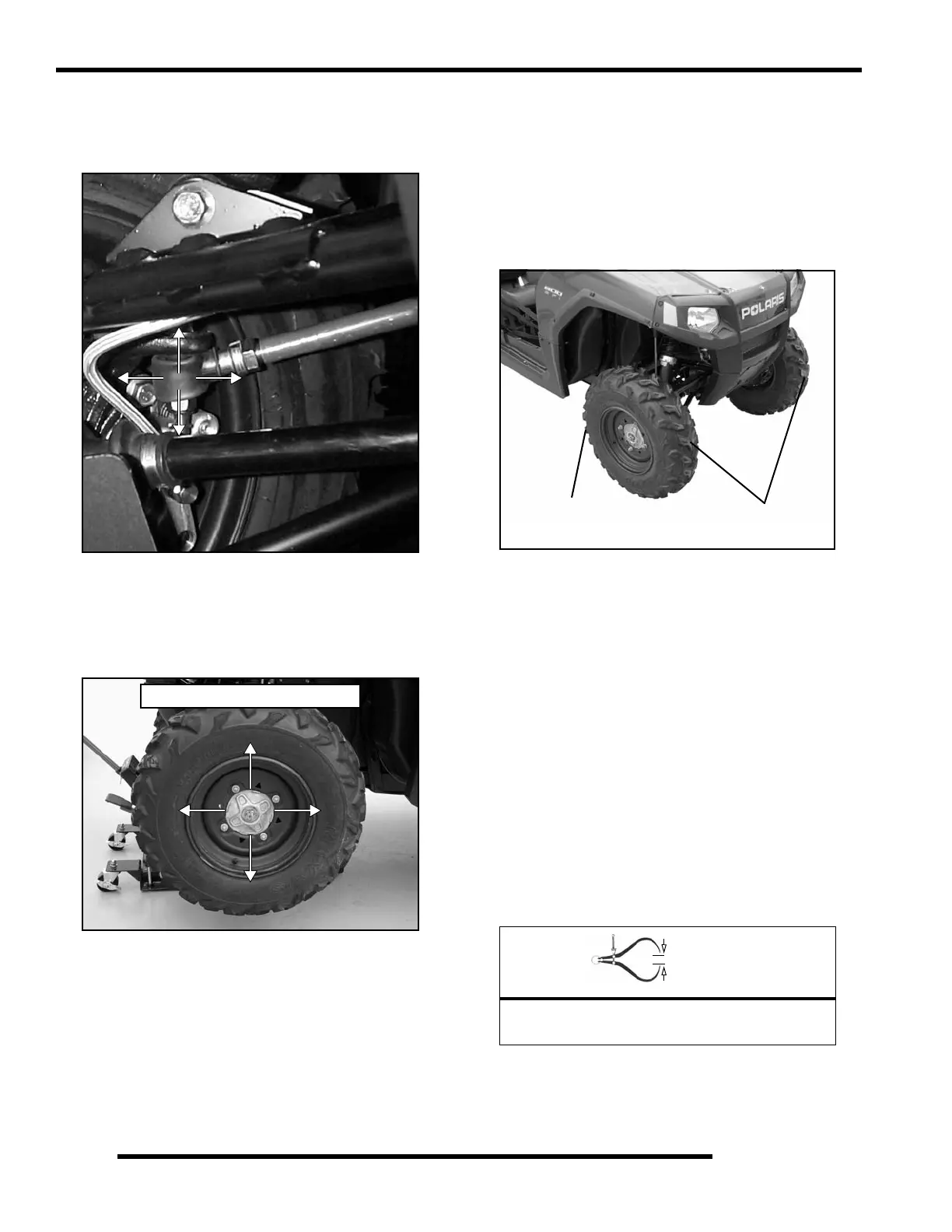